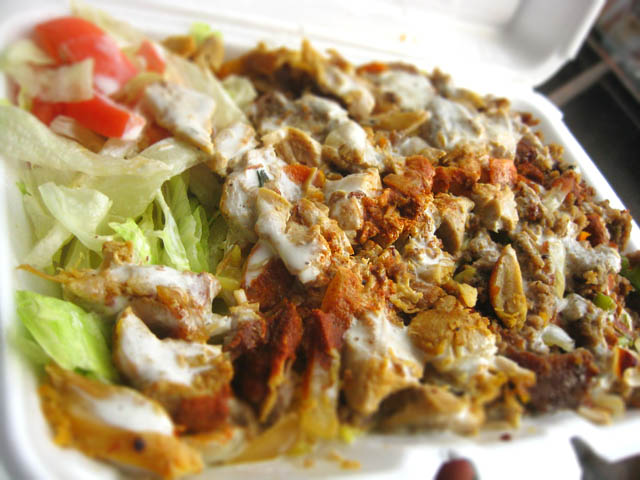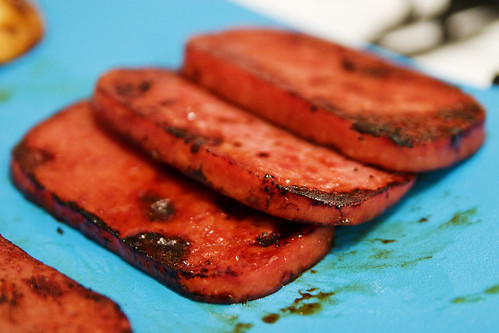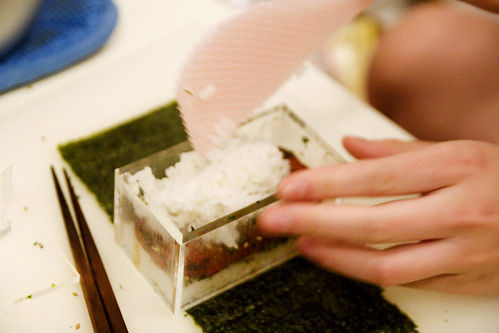Based on: Chicken and Rice NYC Street Meat Style by Eric Rhee and Michelle Won
Notes
Rafiqi’s Delicious Food carts are numerous and abundant in NYC. The delicious odor of garlic and middle-eastern herbs permeated my afternoon commute one day back in 2004 and I’ve been a Rafiqi’s addict ever since.
Rafiqi’s chicken is spicy, it’s tender, it’s packed with flavor, and best of all- it tastes exactly like that amazing smell which drew me in- enticing me to wait on a very long line on a scorching, muggy day back in 2004.
I had a rather successful attempt at recreating the chicken on a pita back in 2006, however the times I’ve tried since then didn’t work out so well. While the chicken was yummy, it didn’t have the depth of flavor you get at Rafiqi’s. I nailed the white sauce though, and that is the cornerstone of the meal!
*updates in red
Ingredients
- 6 chicken thighs, fat trimmed, cubed (you can use bone-in, but boneless will be easier to work with)
- 3 garlic cloves, minced
- 2 Tbsp lemon juice
- 1 Tbsp Oregano
- 2 tsp paprika
- 1 tsp turmeric
- 1 tsp dried minced onion
- 1 tsp fenugreek
- ½ tsp ground coriander
- ¾ cup greek yogurt
- sea salt
- freshly ground black pepper
- 3 tbsp olive oil
- 1 tomato, cubed
- ½ head iceberg lettuce, chopped
- Pita bread
Instructions
- Combine all the spices, garlic, lemon juice and 1 tablespoon of olive.
- Generously salt and pepper.
- Work in the Greek yogurt.
- Add the cubed chicken thighs and onions and let it marinate overnight.
- Put 2 tablespoons of olive oil in a hot skillet.
- Add the chicken.
- When the chicken has browned, stir and place pitas on top.
- Once the pitas are warm, place a pita in a large square of tin foil and add the chicken.
- Top with lettuce and tomato.
White Sauce
- 1 Cup Greek yogurt
- 1 Cup mayonnaise
- 1 Tbsp sugar
- 1 Tbsp salt
- 4 Tbsp white vinegar
- 1.5 Tbsp. lemon juice (½ lemon)
- 1 Tbsp. olive oil
- 1 tsp dill (dry or fresh)
Red Sauce
- 4 parts Harissa
- 1 part Sriracha


:max_bytes(150000):strip_icc():format(webp)/__opt__aboutcom__coeus__resources__content_migration__serious_eats__seriouseats.com__recipes__images__20080403-spammusbui-aa56c8a12670412bbdf8820b44a34f80.jpg)







